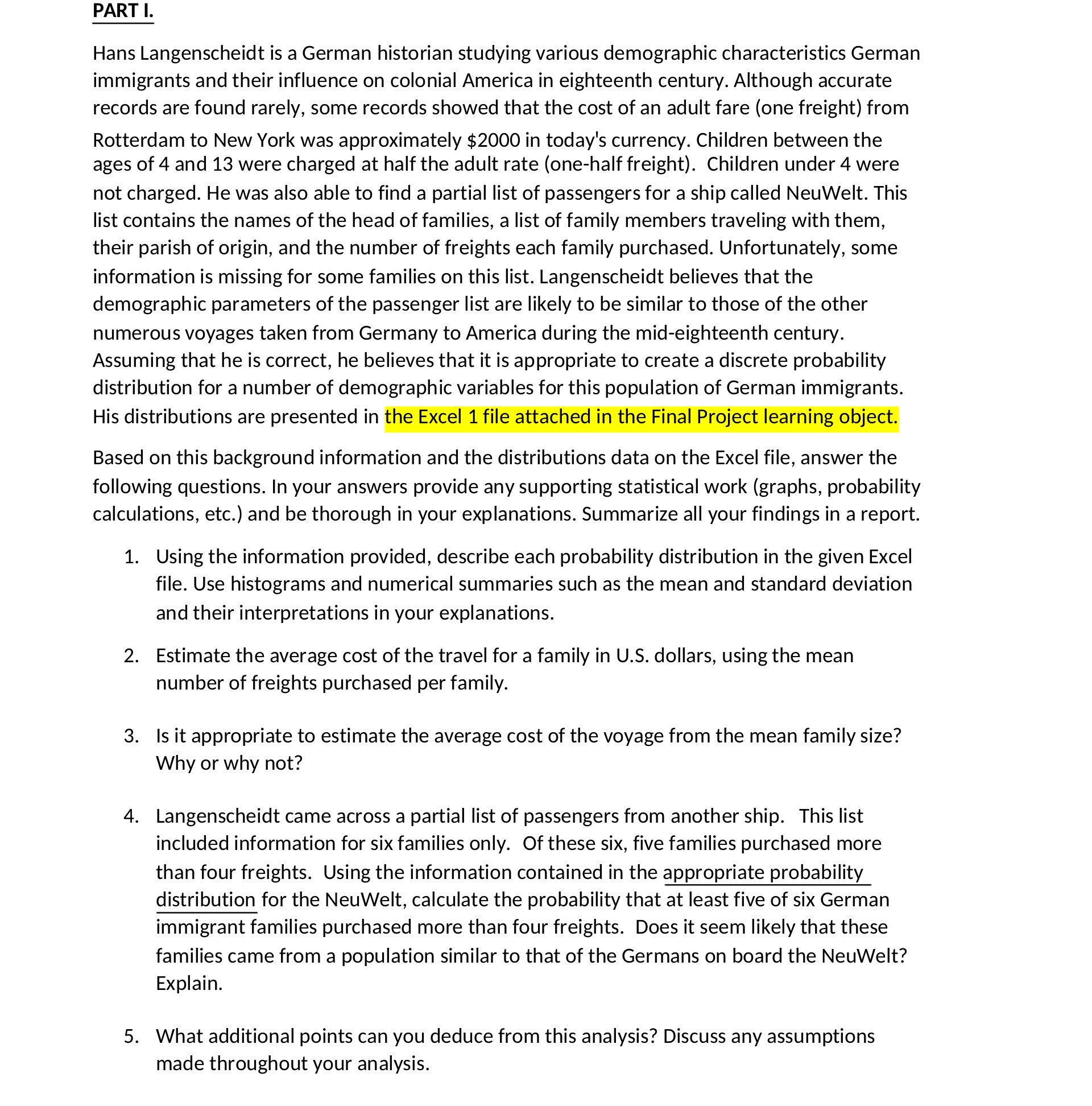PART I. Hans Langenscheidt is a German historian studying various demographic characteristics German immigrants and their influence on colonial America in eighteenth century. Although accurate records are found rarely, some records showed that the cost of an adult fare (one freight) from Rotterdam to New York was approximately $2000 in today's currency. Children between the ages of 4 and 13 were charged at half the adult rate (one-half freight). Children under 4 were not charged. He was also able to find a partial list of passengers for a ship called NeuWelt. This list contains the names of the head of families, a list of family members traveling with them, their parish of origin, and the number of freights each family purchased. Unfortunately, some information is missing for some families on this list. Langenscheidt believes that the demographic parameters of the passenger list are likely to be similar to those of the other numerous voyages taken from Germany to America during the mid-eighteenth century. Assuming that he is correct, he believes that it is appropriate to create a discrete probability distribution for a number of demographic variables for this population of German immigrants. His distributions are presented in the Excel 1 file attached in the Final Project learning object. Based on this background information and the distributions data on the Excel file, answer the following questions. In your answers provide any supporting statistical work (graphs, probability calculations, etc.) and be thorough in your explanations. Summarize all your findings in a report. 1. Using the information provided, describe each probability distribution in the given Excel file. Use histograms and numerical summaries such as the mean and standard deviation and their interpretations in your explanations. 2. Estimate the average cost of the travel for a family in US. dollars, using the mean number of freights purchased per family. 3. Is it appropriate to estimate the average cost of the voyage from the mean family size? Why or why not? 4. Langenscheidt came across a partial list of passengers from another ship. This list included information for six families only. Of these six, five families purchased more than four freights. Using the information contained in the appropriate probability distribution for the NeuWelt, calculate the probability that at least five of six German immigrant families purchased more than four freights. Does it seem likely that these families came from a population similar to that of the Germans on board the NeuWelt? Explain. 5. What additional points can you deduce from this analysis? Discuss any assumptions made throughout your analysis







